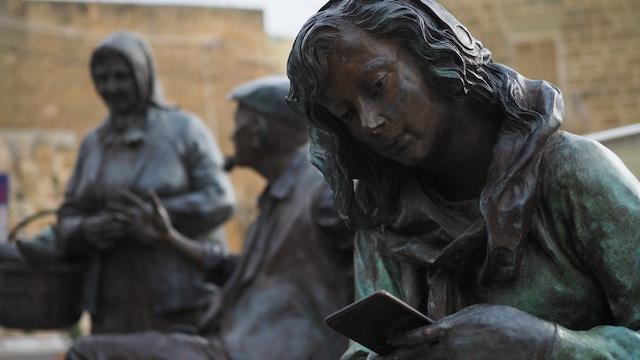We have a lot that is happening. We need to make money to support our families, so we have our jobs, which can be all-consuming, in terms of our time and our attention.
Then we have our families. Our spouses rightly demand our attention as we walk through our lives together, in partnership, navigating each of the details of our shared lives.
Let’s not forget our children. We work to deliberately sow into them, to teach them both in our word as well as in our actions, helping them to navigate through school, through challenges of learning to understand the world, through relationships, and much more.
And of course there are many other things. We have hobbies and passions, but we also have time where we are just tired from all of the other things and we need to rest and relax.
And so there are so many different things that take our time and distract us from some of the most important questions of life. Who am I? Where did I come from? What is my purpose here? These are questions that are incredibly important, but they are difficult. We don’t really know the answers, and we aren’t sure who has the answers, so we can easily ignore them. We move on and think about other things. There will be time some day… I think.
That is an experience that I can relate to having grown up in the US or having been part of a western society. Maybe there are other stories, other ways in which we can spend time thinking about other things besides that which is most important. Stories that I don’t necessarily know nor have had as an experience, but that can have a similar effect.
This may be what the writer of Hebrews had in mind. He started the book by saying that Jesus was the exact representation of God in human form and is the radiance of His glory and then says that Jesus provided purification for sins and then sat down at God’s right hand.
And that is incredible news! We have God himself right here with us? We have God’s own words? And we have purification from sins?
That is incredible!
But only if it is true… and only if we pay attention.
So can we know it is true? Yes, we can look at the historical record. Yes, we can look to what hundreds of eyewitnesses have testified. Yes, we can see what people have died for and for what they have been willing to take a stand. Can we believe them? Or should we take their willingness to die for what they knew to be true with a grain of salt?
And so if this is true, then we need to pay attention. We need to orient our lives in the direction of that truth because it is worth changing course. It is worth rethinking everything. If you can know God but you are required to make a change to your life, would you? These are important questions that speak to who we are and the importance that God has to us. We can say that we put God first, but are we actually doing that?
I think that is why the writer of Hebrews told the people that they shouldn’t ignore the salvation that has been given to us:
We must pay the most careful attention, therefore, to what we have heard, so that we do not drift away. For since the message spoken through angels was binding, and every violation and disobedience received its just punishment, how shall we escape if we ignore so great a salvation? This salvation, which was first announced by the Lord, was confirmed to us by those who heard him.
Hebrews 2:1-3
We need to pay careful attention. We must not drift away on the winds of life. We must live intentionally, not by accident. The message is important. No, in fact, it is critical, but we have to listen. We have to pay attention. Let us lend our ears and our hearts to God and what He is telling us, that He came in the form of Christ to establish His Kingdom and to purchase us with His blood so that we may receive forgiveness from our sins so that we may enter the Kingdom of God. It is salvation from the wrath of God, which is truly the punishment for our sins. Let us not ignore this great salvation but live holy lives in connection with him!









